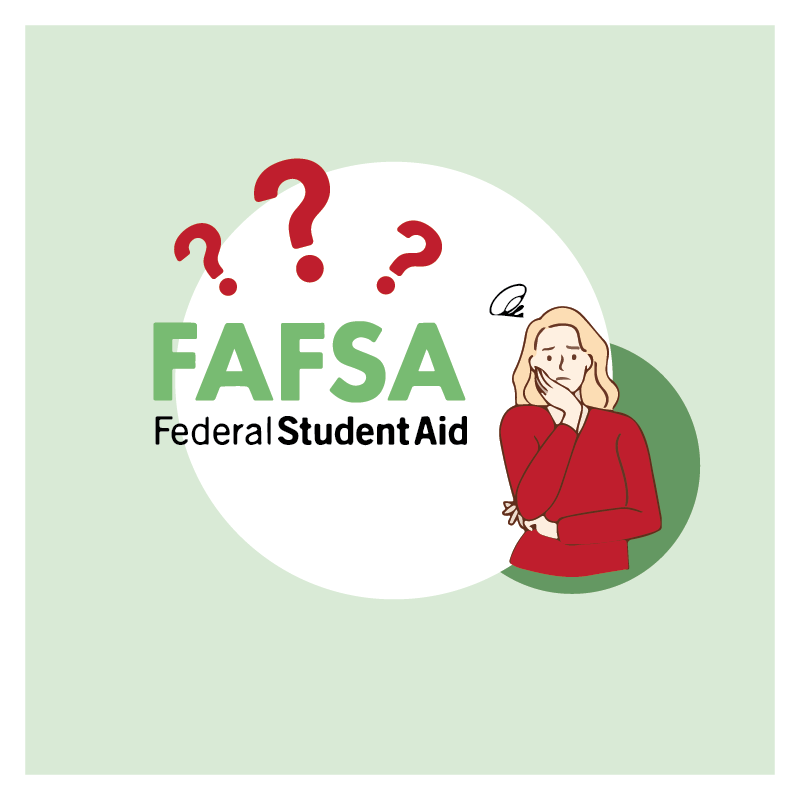The Free Application for Federal Student Aid, better known as the FAFSA, is a long and notoriously puzzling process ahead of every school year.
In an attempt to simplify the process, recent changes have been implemented to the form for the 2024-25 academic cycle yet have been a point of frustration for some students and families.
The FAFSA is for any student seeking federal financial aid, such as through receiving grants, accepting loans and obtaining work-study positions. These options provide significant financial relief for those struggling to fund a higher education.
Information such as bank history, tax filing and personal and parental income are required components to the form and are key determinants to how much – or how little – one is eligible to receive.
Sporadic accessibility times, a limited user capacity and delays in the application opening date have plagued the “soft launch” of the new form since its launch on Dec. 31.
This rocky start has been a cause for concern for University of Miami students, with around 64% of UM undergraduates receiving financial aid through grants in 2021, according to Data USA.
“The new FAFSA was a bit difficult to get into at first,” said John Ham, a sophomore studying industrial engineering.
However, the University of Miami provided a virtual information session covering the changes to the FAFSA on Nov. 9, 2023 for families and students to help ease the transition.
The session was led by associate vice president of financial assistance and student employment, Daniel T. Barkowitz, who gave applicants crucial context regarding why such changes were occurring.
In an overview of the changes, Barkowitz noted that this was the first major change to the FAFSA since 1992.
The shift in the application opening date from the typical Oct. 1 date to Dec. 31, gives less time for students to complete the form, as the priority deadline for UM remains Feb. 1.
As applicants rushed to open the form as soon as it became available, they were met with a long wait time, pauses for site maintenance and confusion on whether their progress on the form has been saved.
Like other colleges, UM has a limited amount of aid available to delegate across its student body. Applicants are incentivized to submit the FAFSA early to have a better chance at receiving more financial aid, but difficulty in accessing the form has students fearing they’ve already fallen behind.
Despite initial complications, these changes are in tandem with a quicker and more simple way of filling out the form, including a reduction in the number of questions from 108 to 36.
“After being able to access the form, my father and I had no problem finishing the form quickly,” Ham said. “The form is definitely more efficient and easier to understand than previous years.”
Alterations to the 2024-2025 FAFSA application are the outcome of the FAFSA Simplification Act (2021), an attempt to streamline the application process and make it easier for students and families to complete.
“The wording was still confusing on some questions, like the one about if your parents are ‘not unwilling’ to do their taxes. But overall it was an easier process than prior years,” said Chris Enriques, a junior studying music education.
Changes to the form can also be attributed to the FUTURE Act of 2020, which authorizes funding for minority-serving collegiate institutions, such as Historically Black Colleges and Universities, and increases the allocation of Pell Grants for those students.
For families with multiple children getting a higher education, a new change in this year’s FAFSA will shift how the parental income is viewed across their children and calculated into federal aid.
This is due to a modification in the need analysis formula, which has replaced the Expected Family Contribution (EFC) calculation with the Student Aid Index (SAI) for the 2024-2025 school year.
Parental contribution will no longer be divided between students in a family, possibly decreasing the amount of aid a student receives, as less of a need will be reflected.
In terms of UM’s role in the federal financial aid process, a student’s need-based grant and merit scholarship from the University are intended to stay the same if no changes in their financial status are shown in a student’s application.
Students seeking financial assistance and support heading into the 2024-2025 school year can begin the FAFSA application process at studentaid.gov.







